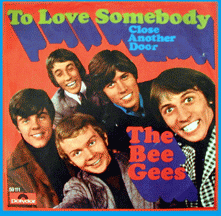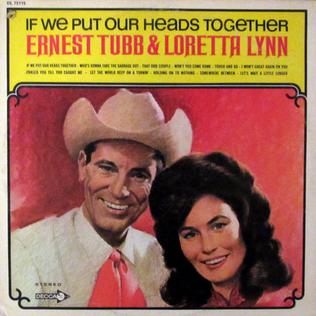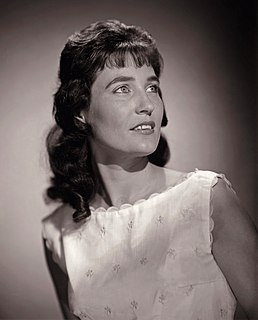Related Research Articles
A one-hit wonder is any entity that achieves mainstream popularity, often for only one piece of work, and becomes known among the general public solely for that momentary success. The term is most commonly used in regard to music performers with only one hit single that overshadows their other work. Some artists dubbed "one-hit wonders" in a particular country have had great success in other countries. Music artists with subsequent popular albums and hit listings are typically not considered a one-hit wonder. One-hit wonders usually see their popularity decreasing after their hit listing and most often do not ever return to hit listings with other songs or albums.

Delores LaVern Baker was an American R&B singer who had several hit records on the pop chart in the 1950s and early 1960s. Her most successful records were "Tweedle Dee" (1955), "Jim Dandy" (1956), and "I Cried a Tear" (1958).
Rocksteady is a music genre that originated in Jamaica around 1966. A successor of ska and a precursor to reggae, rocksteady was the dominant style of music in Jamaica for nearly two years, performed by many of the artists who helped establish reggae, including harmony groups such as the Techniques, the Paragons, the Heptones and the Gaylads; soulful singers such as Alton Ellis, Delroy Wilson, Bob Andy, Ken Boothe and Phyllis Dillon; musicians such as Jackie Mittoo, Lynn Taitt and Tommy McCook. The term rocksteady comes from a popular (slower) dance style mentioned in the Alton Ellis song "Rocksteady", that matched the new sound. Some rocksteady songs became hits outside Jamaica, as with ska, helping to secure the international base reggae music has today.
Georgia Gibbs was an American popular singer and vocal entertainer rooted in jazz. Already singing publicly in her early teens, Gibbs first achieved acclaim in the mid-1950s interpreting songs originating with the black rhythm and blues community and later as a featured vocalist on a long list of radio and television variety and comedy programs. Her key attribute was tremendous versatility and an uncommon stylistic range from melancholy ballad to uptempo swinging jazz and rock and roll.

Ernest Dale Tubb, nicknamed the Texas Troubadour, was an American singer and songwriter and one of the pioneers of country music. His biggest career hit song, "Walking the Floor Over You" (1941), marked the rise of the honky tonk style of music.
Lynn Taitt was a guitarist born in San Fernando, Trinidad and Tobago, who later moved to Jamaica and became a pioneer of rocksteady music.

Howard Greenfield was an American lyricist and songwriter, who for several years in the 1960s worked out of the famous Brill Building. He is best known for his successful songwriting collaborations, including one with Neil Sedaka from the late 1950s to the mid-1970s, and near-simultaneous songwriting partnerships with Jack Keller and Helen Miller throughout most of the 1960s.

Bobby Robinson was an American independent record producer and songwriter in New York City, most active from the 1950s through the mid-1980s.

"Everybody's Somebody's Fool" is a song written by Jack Keller and Howard Greenfield that was a No. 1 hit for Connie Francis in 1960. A polka-style version in German, "Die Liebe ist ein seltsames Spiel", was the first German single recorded and released by Connie Francis, and it reached No. 1 on the single chart in 1960 in West Germany.

"Shadow Dancing" is a disco song performed by English singer-songwriter Andy Gibb. The song was released in April 1978 as the lead single from his second studio album of the same name. The song reached number one for seven weeks on the Billboard Hot 100 in 1978. Albhy Galuten arranged the song with Barry Gibb. While Andy Gibb would have three more Top 10 hits in the U.S., this would be his final chart-topping hit in the United States. The song became a platinum record.

"To Love Somebody" is a song written by Barry and Robin Gibb. Produced by Robert Stigwood, it was the second single released by the Bee Gees from their international debut album, Bee Gees 1st, in 1967. The single reached No. 17 in the United States and No. 41 in the United Kingdom. The song's B-side was "Close Another Door". The single was reissued in 1980 on RSO Records with "How Can You Mend a Broken Heart" as its flipside. The song ranked at number 94 on NME magazine's "100 Best Tracks of the Sixties". It was a minor hit in the UK and France. It reached the top 20 in the US. It reached the top 10 in Canada.
The Strangers was an Australian rock band based in Melbourne, that lasted from 1961 to 1975. The band started out playing instrumental songs in a style similar to The Shadows, with influences from Cliff Richard. The original line-up included Peter Robinson (bass), Graeme ('Garth') Thompson (drums), Laurie Arthur and Fred Wieland. Robinson had previously played with The Thunderbirds, and went on to replace Athol Guy in The Seekers from the late 1970s.
Billy Bland was an American R&B singer and songwriter.

If We Put Our Heads Together is the third and final collaborative studio album by American country music artists Ernest Tubb and Loretta Lynn. It was released on June 9, 1969, by Decca Records.

Everybody Knows is the debut album by English dance-pop singer Sonia, released in April 1990. The album was predominantly written and produced by Stock Aitken Waterman and includes the UK and Irish number one single "You'll Never Stop Me Loving You" and the UK top 20 hits "Can't Forget You", "Listen to Your Heart", "Counting Every Minute", and "End of the World". At the time of release, Sonia became the first female UK artist to achieve five top 20 hit singles from one album. Everybody Knows was re-issued by Cherry Red Records in October 2010 in remastered and expanded form.
"Walking the Floor Over You" is a country music song written by Ernest Tubb, recorded on April 26, 1941 in Fort Worth, Texas, and released in the United States that year.

Henry Bernard Glover was an American songwriter, arranger, record producer and trumpet player. In the music industry of the time, Glover was one of the most successful and influential black executives. He gained eminence in the late 1940s, primarily working for the independent King label. His duties included operating as a producer, arranger, songwriter, engineer, trumpet player, talent scout, A&R man, studio constructor, while later in his career he became an owner of his own label. Glover worked with country, blues, R&B, pop, rock, and jazz musicians, and he helped King Records to become one of the largest independent labels of its time. Thanks to the efforts of family, friends and fans, Glover's hometown of Hot Springs, Arkansas celebrated the 100th anniversary of his birth in 2021 by inducting him into the downtown "Walk of Fame," the Mayor's "Proclamation," "Key to the City," and named a parklet "Henry Glover Way," along Black Broadway after him. In 2018, Glover was recognized with a Lifetime Achievement Award by the King Records 75th Anniversary. In 2013, he was inducted into the Blues Hall of Fame.

American country artist Loretta Lynn released 86 singles, two B-sides and 14 music videos. Her debut single was "I'm a Honky Tonk Girl" (1960) via Zero Records. Promoting the song with her husband by driving to each radio station, the effort paid off when it peaked at number fourteen on the Billboard Hot Country Songs chart. Arriving in Nashville, Tennessee, that year, she signed a recording contract with Decca Records. In 1962, "Success" reached the sixth position on the country songs chart, starting a series of top ten hits including "Wine Women and Song" and "Blue Kentucky Girl". She began collaborating with Ernest Tubb in 1964 and recorded four hit singles with him, including "Mr. and Mrs. Used to Be". Lynn's popularity greatly increased in 1966 when she began releasing her own compositions as singles. Among the first was "You Ain't Woman Enough " which reached the second position on the country songs list. She then reached the number one spot with "Don't Come Home A-Drinkin' " (1967). This was followed by "Fist City" (1968) and "Woman of the World " (1969).
"What Am I Living For" is a song written by Fred Jay and Art Harris and performed by Chuck Willis featuring the Reggie Obrecht Orchestra and Chorus. It reached No. 1 on the U.S. R&B chart and #9 on the U.S. pop chart in 1958.
References
- ↑ "Billy Bland, "Let the Little Girl Dance" Chart Positions" . Retrieved February 21, 2019.
- ↑ "Billboard Top 100 - 1960". Archived from the original on January 2, 2014. Retrieved February 21, 2019.
- ↑ "Ernest Tubb, "Everybody's Somebody's Fool" Single Release" . Retrieved February 21, 2019.
- ↑ "Toni Williams, "Let the Little Girl Dance" Single Release" . Retrieved February 21, 2019.
- ↑ "Grantley Dee, "Let the Little Girl Dance" Single Release" . Retrieved April 4, 2021.
- ↑ "Hopeton Lewis, "Let the Little Girl Dance" Single Release" . Retrieved February 21, 2019.
- ↑ "Get on Up!: Joe Gibbs Rocksteady" . Retrieved February 21, 2019.